John Wick: Chapter 3 – Parabellum Case Study
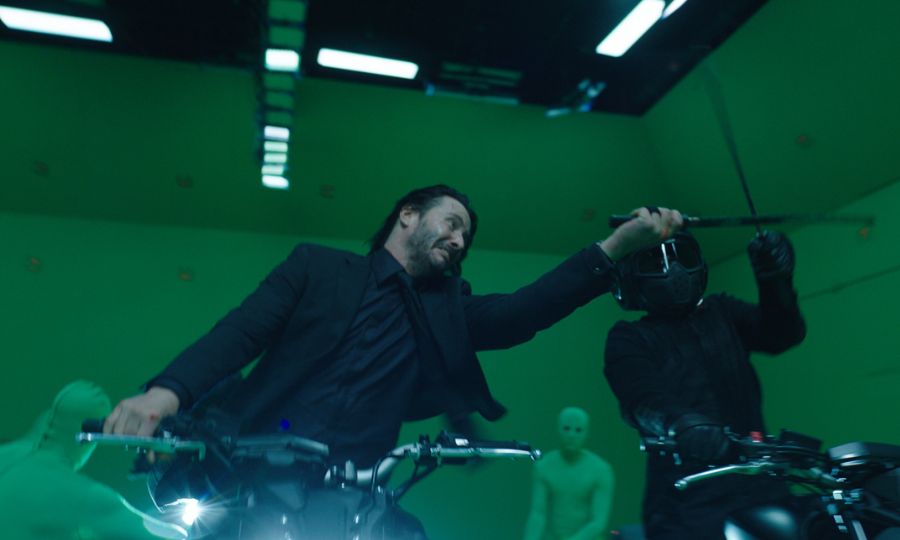
Case Study
From digital environments to face replacements and FX simulations, Image Engine's VFX helped bring Keanu Reeves' heart-stopping stunts for the bike chase sequence to life in John Wick: Chapter 3 - Parabellum.
View portfolio pageJohn Wick: Chapter 3 – Parabellum is the third installment of the critically acclaimed John Wick franchise, featuring Keanu Reeves as the titular character, a former hitman on the run after breaking the rules of the international assassins’ guild.
Image Engine played a crucial role in creating the unforgettable Bike Chase sequence in the film. With our expertise in digital environments, face replacements, digital doubles, and FX simulations, Image Engine helped bring Keanu Reeves’ epic stunts to life on the big screen.
As the VFX Supervisor on John Wick: Chapter 3 – Parabellum, Christian Irles was responsible for overseeing Image Engine’s work on the film. In an interview with The Art of VFX, Christian discussed the challenges and opportunities presented by the project, and how the Image Engine team rose to the occasion. Christian’s leadership and expertise were instrumental in the success of the Bike Chase sequence, and helped to ensure that John Wick: Chapter 3 – Parabellum was a visual tour de force.
Collaboration with the client
Our team was thrilled to work on the John Wick franchise, especially the challenges presented by the Bike Chase sequence. Throughout the project, we had an honest collaboration with director Chad Stahelski and VFX Supervisor Robert Nederhorst. We spoke multiple times a week and built trust and patience as we embarked on a complex journey. Initially, Chad had reservations about using CG and digital stunt work due to his extensive experience in stunt coordination and supervision. However, after we showed him the potential, we think he fully embraced it.
One of the most challenging shots we had was 1000 frames long, requiring copious amounts of CG, complex plate stitching, and hours of comp integration. It’s difficult to visualize a shot like that until everything comes together. It’s a bit of a catch 22, really. We work in an industry in which our clients need to see visual results to feel confident, but we can’t show polished visual results without having taken all the other steps beforehand. Trust is definitely a very important ingredient in what we do.
The client’s expectation was for our sequence to look photographically real and action-packed. In terms of approach, we were asked to work within the visual boundaries of what had been filmed, while being encouraged to improve the action beats, whenever possible.
Our approach
We approached the sequence in a pretty standard manner in terms of planning: Build our assets while plates are match-moved & bikes roto-animated, followed by Layout (plate stitch), Animation, FX, Lighting and Comp approval stages.
We worked within the visual boundaries of what had been filmed, anchoring everything in reality. As the first two John Wick films are pure raw action based in a believable world, our work had to seamlessly blend with the photography Chad and Rob had filmed.
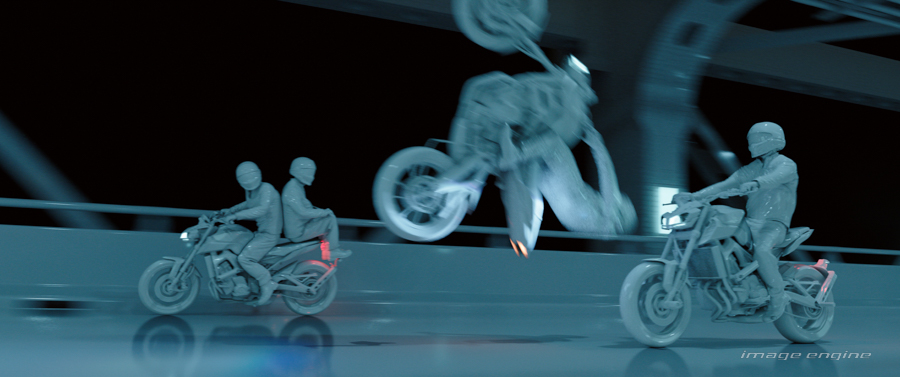
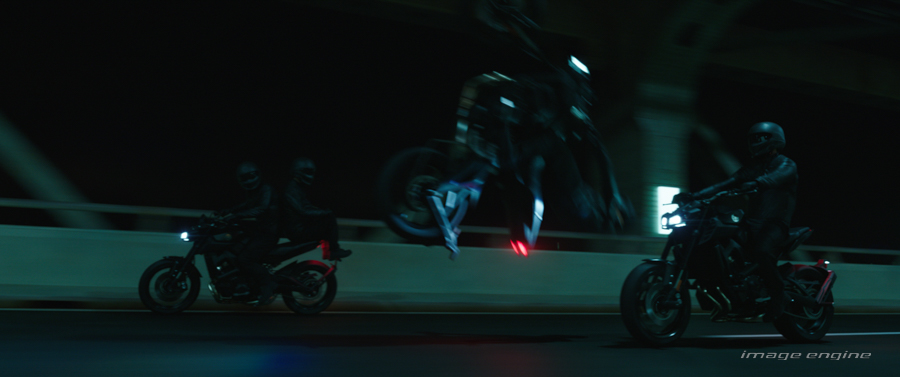
When planning the execution of our shots, we broke it down into several steps. Firstly, we created photoreal assets that matched practical ones, including the bridge and bikes/riders. We then created invisible camera transitions between the Verrazano bridge plates and greenscreen stage plates, matched our animation style to the stunt action shot on the bridge, and sprinkled believable looking FX elements, referencing practical bike stunt work. Finally, we executed flawless 2D integration.
Seeing green
The sequence was filmed in two locations: Verrazano Bridge in New York City, and a green screen stage aptly called ‘The Green Screen Bike Room.’ Our team created photoreal assets that matched practical ones, including the bridge and bikes/riders. We then created invisible camera transitions between the Verrazano bridge plates and green screen stage plates, matched our animation style to the stunt action shot on the bridge, and sprinkled believable-looking FX elements, referencing practical bike stunt work. The FX work on this project included blood, tire smoke, helmet, gun, and bike debris (i.e. smoke, sparks, and many flying pieces). Finally, we executed flawless 2D integration.
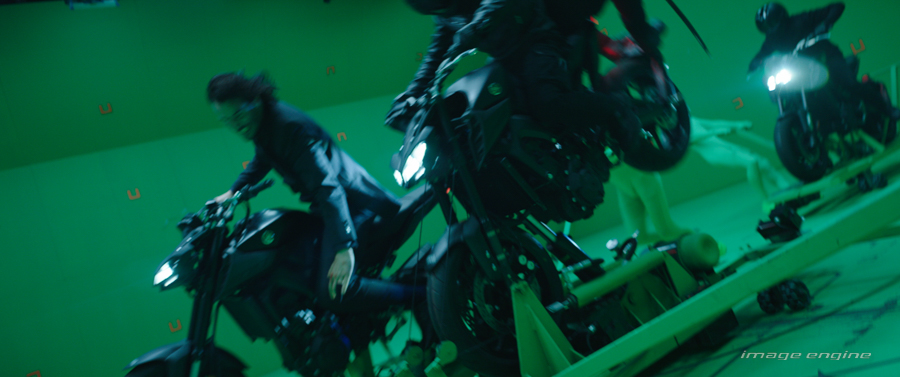
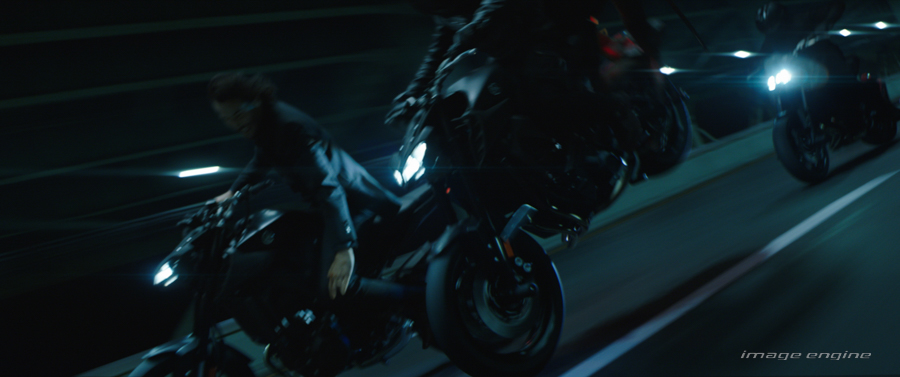
At the Verrazano Bridge, professional stunt drivers did all the bike-chasing action, riding at 100km/h. In the same location, crash stunts were performed using rigged bikes and dummies (safety first!). Our team roto-animated every practical bike and match-moved every plate, and we used rough keys for the green screen plates so we could see the CG bridge behind the actors.
All the close-up fight action involving Keanu was filmed in the Green Screen Bike Room. He and the assassins sat on motorcycles moved around by film crew dressed in green from head to toe. A lot of attention was paid to the action choreography, the camera moves (to be able to stitch these with the Verrazano bridge plates), and the interactive lighting to make sure it felt like they were riding on the bridge at 100km/h as well.
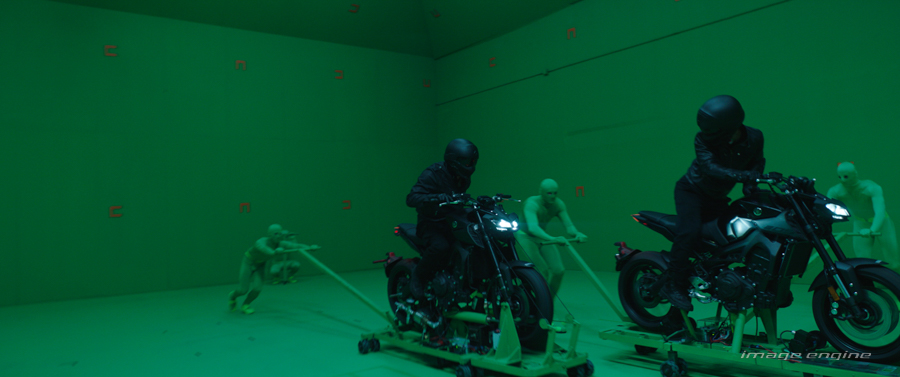
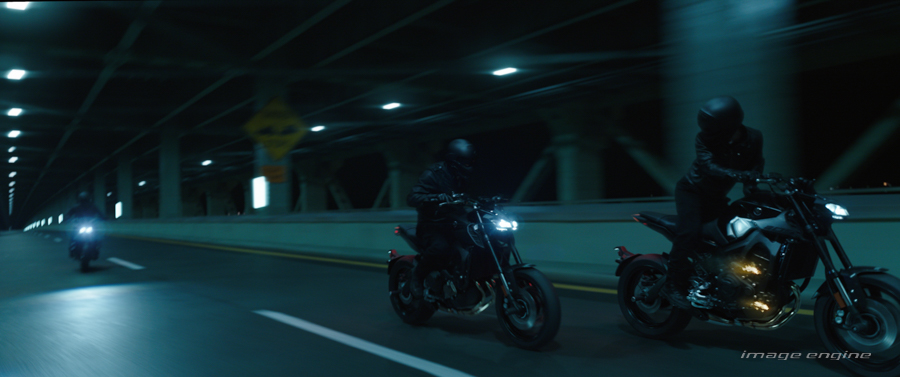
The CG bike model was provided to us by production. Although textures were also provided, we decided to re-texture it, knowing how close it would get to the camera and the damage it’d have to endure. Riders were modeled and textured based on cyberscan and texture photography provided by production. Close attention was paid to having accurate cloth simulation once in shot context. Our model also had to allow for one of its arms to be severed, to his disappointment.
Texture work on John Wick was achieved in Mari and Substance using a combination of procedural maps and texture photography provided by our clients. Shading of all assets was done in our open-source software, Gaffer. We use Arnold as our renderer.
We animated our bikes and riders taking cue from the stuntmen in the Verrazano Bridge. The goal always was to not be able to tell the difference between the two (practical vs CG). This being said, Chad and Rob sometimes asked us to go a little over the top to give the action more punch!
Stitching the plates together in our layout department was the foundation of our shots. We had to match-move every plate and roto-animate every practical bike. We also needed rough keys for the green screen plates so we could see the CG bridge behind the actors.
Once layout had all the cameras and bikes in 3D space, they assembled the shots, ensuring that the practical and CG Verrazano Bridge always lined up, the speed between plates during the transitions was consistent and that the camera blends were seamless.
Cloning Keanu
Image Engine was also responsible for creating a number of digital doubles and face replacements for the film, including creating a digital double for Keanu Reeves, as well as several other actors and stunt performers. This work was critical to the success of the project, ensuring that the shots flowed seamlessly, retaining the dynamic pace of the sequence.
We used two approaches for Keanu’s face replacement, depending on the action. One was a 2.5D face replacement for a shot taken on the Verrazano Bridge in New York City, where production had a very limited time with Keanu. They were only able to shoot one take of him riding down the bridge at a constant distance from the camera. This take became the base for our 2.5D face replacements as it was filmed in the correct lighting conditions.
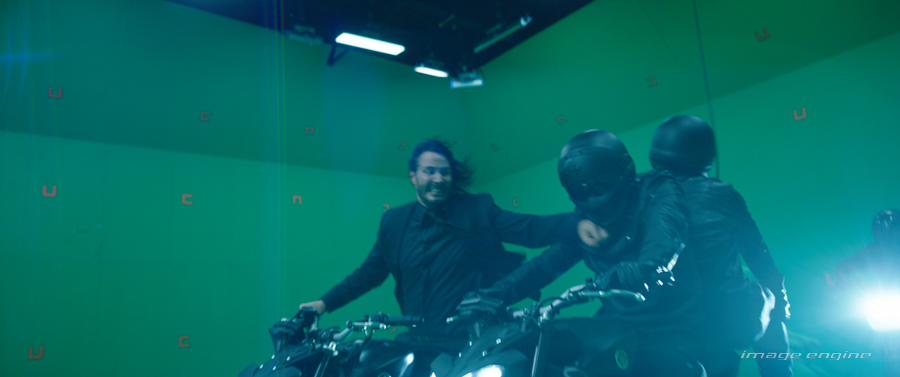
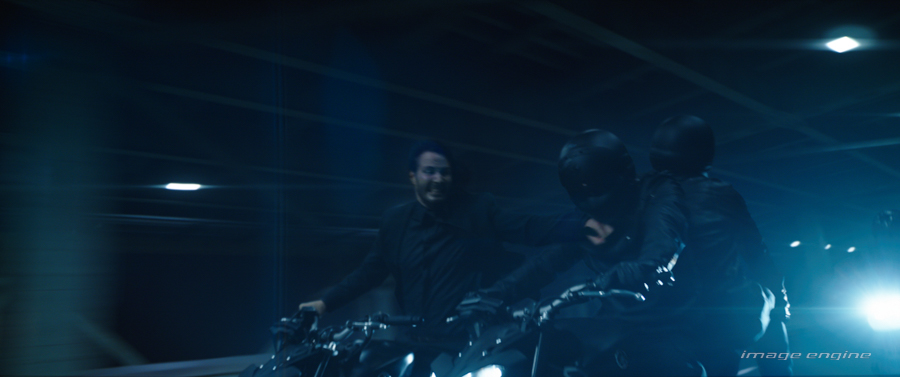
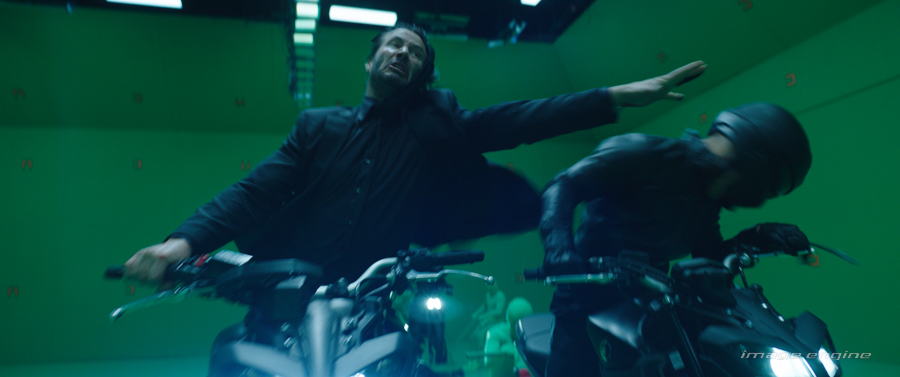
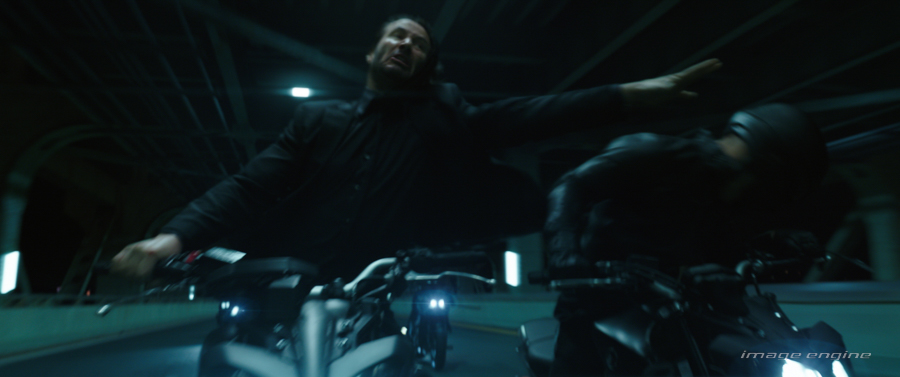
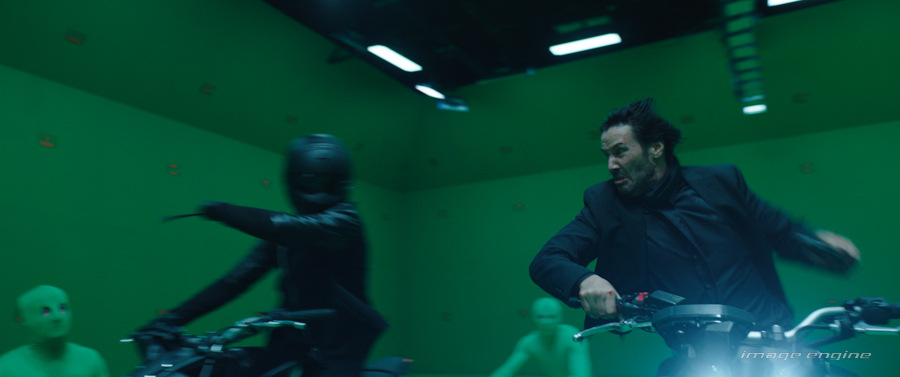
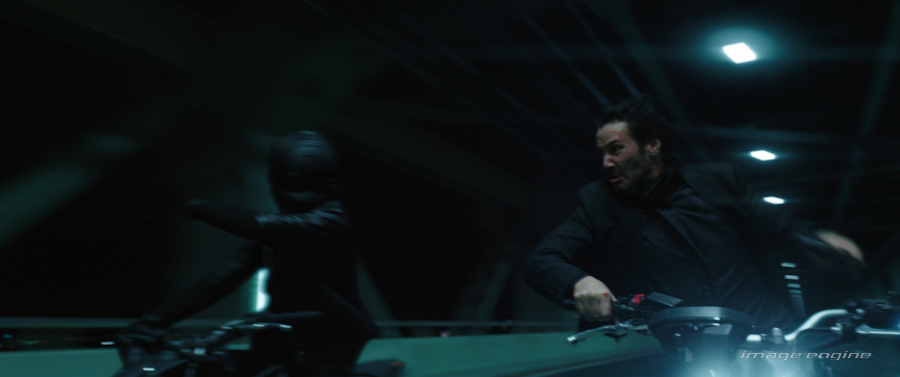
The methodology we followed for the 2.5D face replacements was to roto-animate both Keanu’s head from the element plate mentioned above and the stunt man’s head in the Verrazano bridge plates. In Nuke, we then projected Keanu’s face onto its corresponding geo, and snapped that geo onto the stunt man’s head geo. Once the alignment in 3D was good, we proceeded with finessing the integration.
The other approach was a 3D face replacement created using cyberscans and texture photography. His hair was created in Houdini.
Movie magic
Image Engine’s artists created digital environments for several key sequences in the film. These environments included a digital version of the Continental Hotel, as well as the interior of a glass-walled building. The team utilized various techniques, including photogrammetry and procedural modelling, to bring these environments to life.
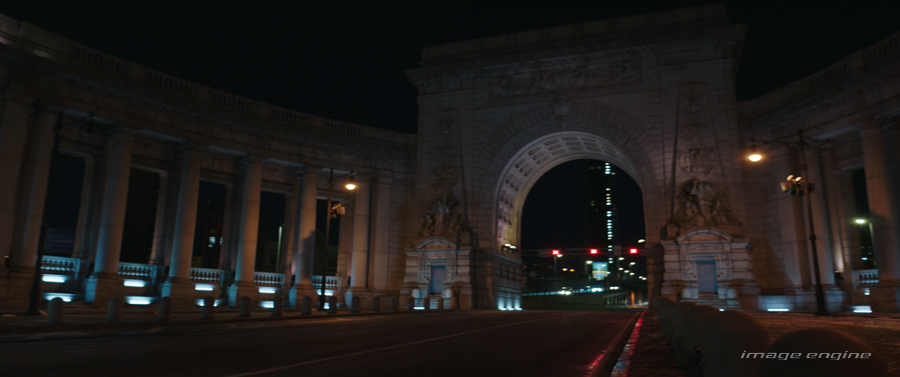
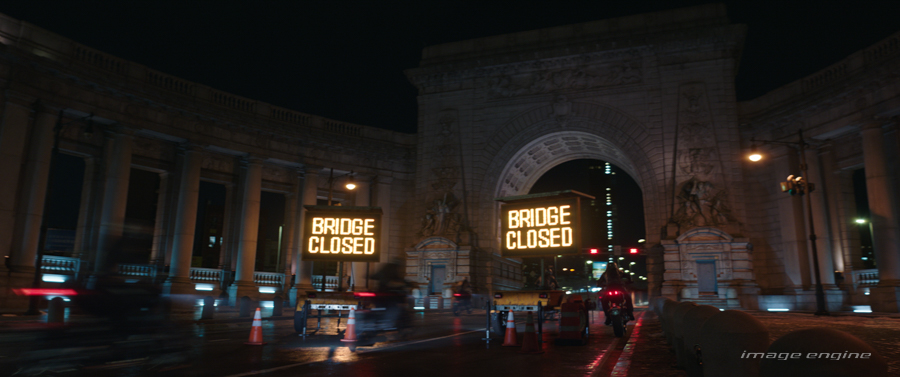
At the early stages of the project (when we were brainstorming on how to build our bridge), we knew we had to nail two things: Firstly, our bridge had to look identical to the practical one as we would be transitioning to and from it, and secondly, it had to be longer than the real bridge due to the duration of the shots. In the longest of our shots, Keanu and the assassins drove through 3 times the length of the real bridge. Movie magic!
We modelled the bridge using the lidar provided by our client, making sure we could duplicate and repeat it as many times as needed. The bridge was textured using a combination of procedural maps and texture photography from Verrazano Bridge.

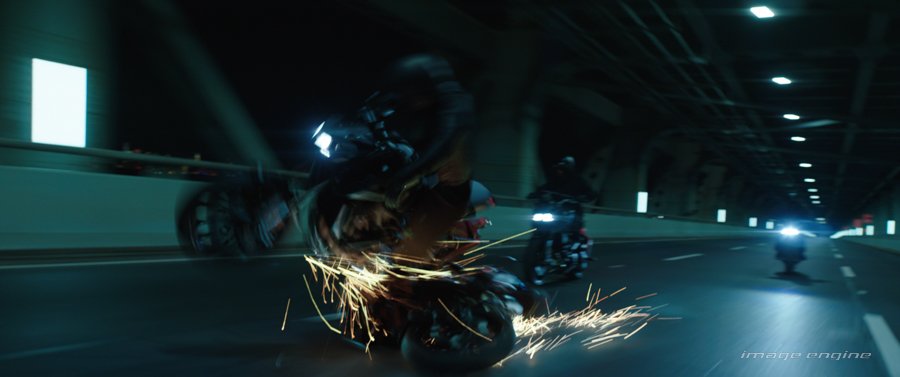
Last but not least, look dev! In order to achieve a perfect match between our bridge and the real one, we camera-tracked a Verrazano bridge plate and rendered our bridge using that camera. That way we could A/B between the real bridge and the CG bridge and fine-tune any model, texture, shading, or lighting discrepancies.
The distant city outside the bridge was achieved in digital matte painting (DMP) using tiles provided by production.
The greatest hits
One of the highlights of the project was when Chad thought that one of the fully CG shots was plate photography, which is the highest compliment for a photoreal project.
For our longest and most difficult shot, it had it all – invisible transitions between Verrazano bridge plates and greenscreen stage, CG bridge, bikes and riders, a big CG bike crash, CG swords and blood, gunshots, a severed arm and plenty of Keanu’s glorious action moves—Pure John Wick essence.
The fifth shot in the sequence, when a bike flips up in the air and takes out another, is another great shot. It is fully CG and I am personally very proud of our fantastic team for it!
The final result of what we created for John Wick 3 was a thrilling, action-packed sequence that felt grounded in reality. The collaboration with Chad, Rob, and the rest of the team was a key factor in making this happen. We were able to build trust through honest communication, hard work, and a shared commitment to achieving the client’s vision. We’re thrilled with the results.

